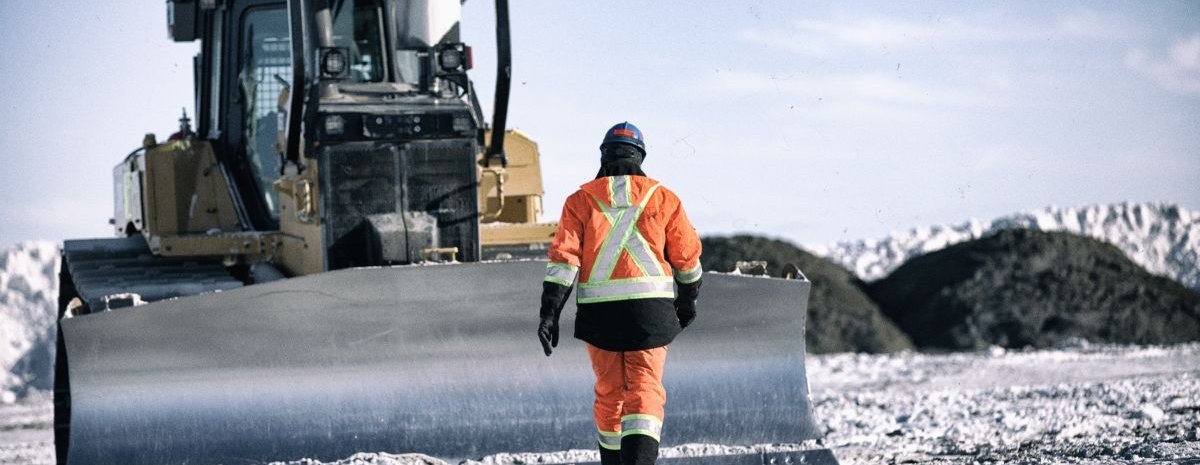Cold Weather is on the Way

Tips to Keep Your Fleet in Top Condition
—
Whether you’re going to store your machines or use them to work through the winter, you want to make sure that when you’re ready to use a machine…it’s ready to go. Failing to follow recommended winter maintenance can result in damaged components and unexpected repair bills. Check out these tips for storage and winter operation to make sure you’ve got your fleet covered.
WINTER STORAGE CHECKLIST
—
It’s a good idea to do some planning for winter storage. Identify the order in which machines will be stored and where they will be located. Once priorities are set, you can get a schedule for winter prep on the calendar.
- Remove any attachments from the equipment for storage in a separate place at room temperature. This protects hoses and connections from cold temperatures and makes them easier to attach when they are needed again.
- Lubricate the accessories and the machinery (if you haven’t already). A high-viscosity lubricant will not drip off your equipment in the cold, and it will coat the parts better than low-viscosity grease.
- Drain all liquids from the engine, including the fuel. Removing the fuel with the engine running ensures you get all the diesel out.
- Remove the battery and store it at room temperature to keep it from losing its charge. If any systems in your heavy equipment store water or fluid, drain those and dry them thoroughly to keep them from freezing.
- When you put equipment in storage, label or tag it as stored and not ready for use. Labels will help keep people from putting the equipment into service before it’s been prepared for a working environment. If you have covers available, cover the equipment to protect the machinery from dust and scrapes during the winter. Even a tarp covering the equipment will add further protection from the elements.
WORKING IN WINTER CHECKLIST
—
When the temperatures freeze, you don’t want your equipment to do the same. Here are the things you need to check every day when operating your machinery in chilly weather.
- Install the correct lubricants. Before it gets too cold outside, install the correct engine, hydraulic, transmission and final drive lubricants for your exact machine and the temperature range it will be working in.
- Condition hydraulic hoses. The outer wrapper of hydraulic hoses can become stiff and crack in colder temperatures. For best results, apply an arctic hydraulic oil for colder months, and normal machine use will condition the hydraulic hoses.
- Use block heaters. In most cases, a block heater is the simplest way to fire up your engine in cold weather as it increases the temperatures of the engine and hydraulic fluid. To help speed up the warm-up process, block the radiator to restrict cold air from the fan.
- Keep batteries fully charged and warm. Cold weather requires your batteries to generate nearly twice as many cranking amps in order to turn over, so keep yours charged and warm for easy starting. If you are working in sub-zero temperatures, storing the battery indoors at room temperature when it’s not in use can also help.
- Use starting fluid. Keep all starting fluid at room temperature and inject it only while the engine is cranking. WARNING: Starting fluids are highly flammable and toxic, so ensure proper storage when not in use. Never store them in the operator’s compartment.
- Always, always, always — run the engine until it reaches operating temperature. Help prevent the intake and exhaust valves from sticking by running your engine until it reaches operating temperature before you begin each day’s work.
- Ensure your tires are properly inflated. Check your tires at the beginning of every shift to make sure they’re filled to the proper pounds per square inch for your machine. As we all know, colder weather can cause them to lose air more quickly. Always inflate your machine’s tires in a heated area to help the tire bead seat better.
- Schedule an undercarriage inspection. Before the ground freezes, schedule an undercarriage inspection to help ensure that all components are well lubricated and in good working order to reduce the stress on components and joints.
- Store Diesel Exhaust Fluid (DEF) properly. DEF freezes at prolonged exposure to temperatures of 12° F or lower, so make sure the area you choose to store it in is well-insulated. In addition, DEF does thaw out, so store the fluid in an appropriate container to avoid it bursting during expansion.
- Always fill the fuel tank at the end of a shift. Avoid a frozen fuel tank (and a major headache) in the morning by filling up at the end of each day. Always keep the fuel storage tank clean of water, debris and sediment by draining the water from the water separator on a daily basis before refilling the tank.
For more information or quote for Cat machines please contact our representative:
| Estonia +372 679 9260 | info.ee@avesco-cat.com | Latvia +371 2 570 17 11 | info.lv@avesco-cat.com | Lithuania +370 52 603 242 | info.lt@avesco-cat.com |






